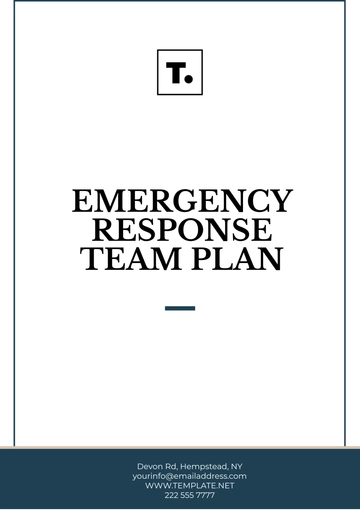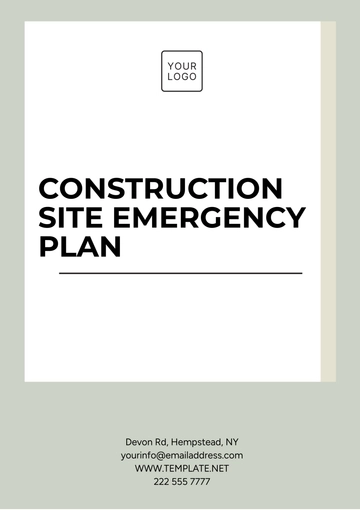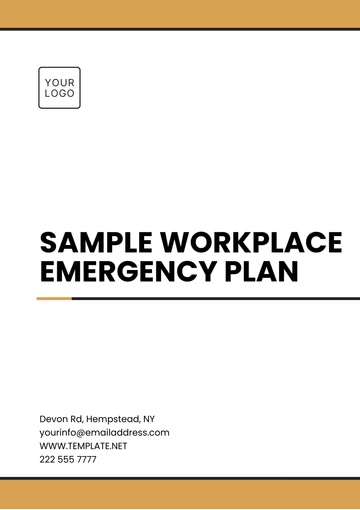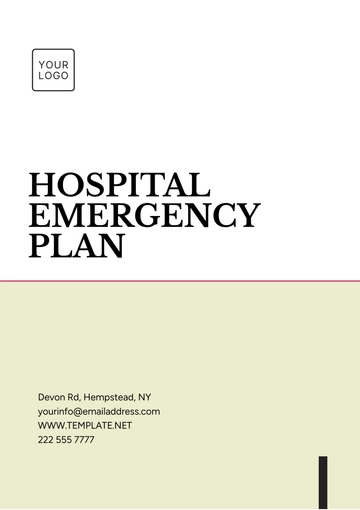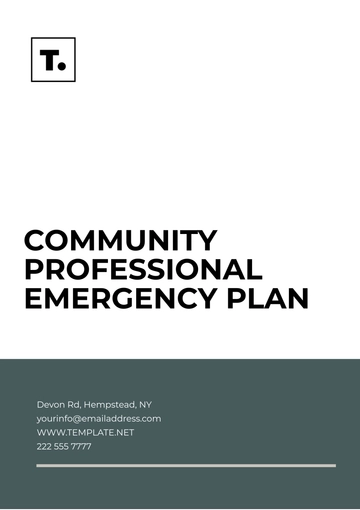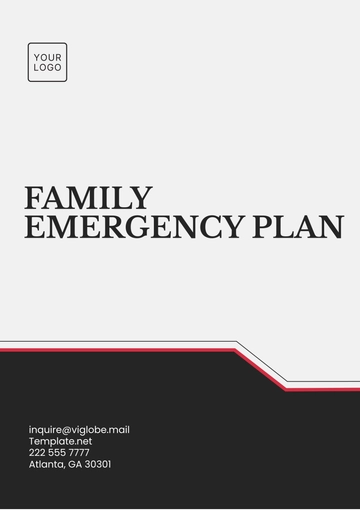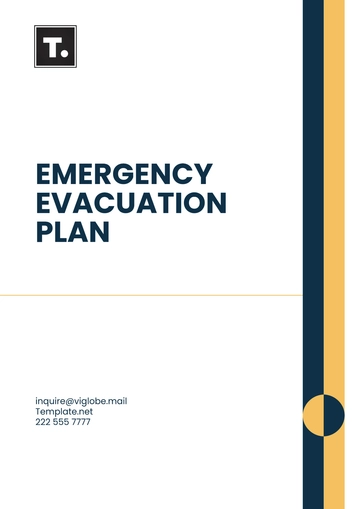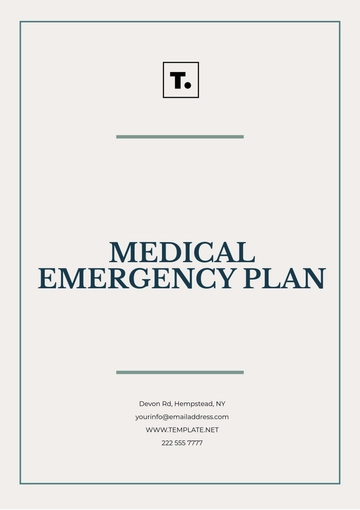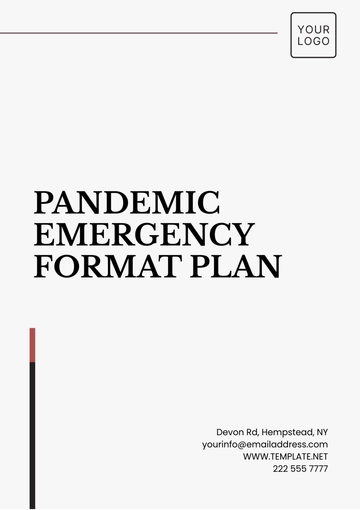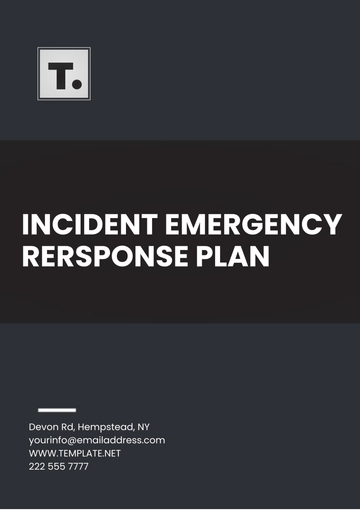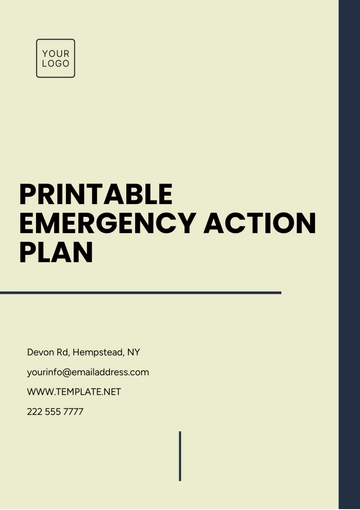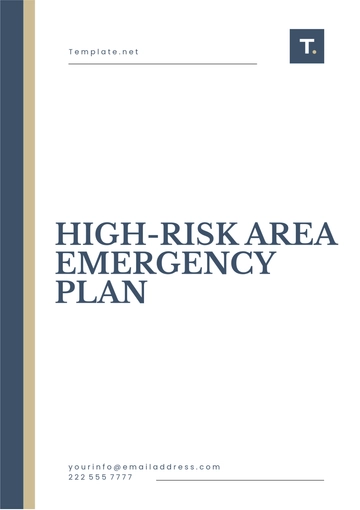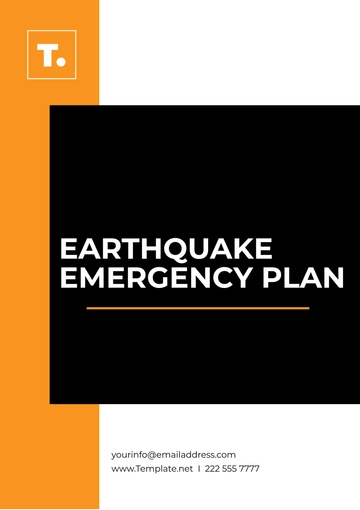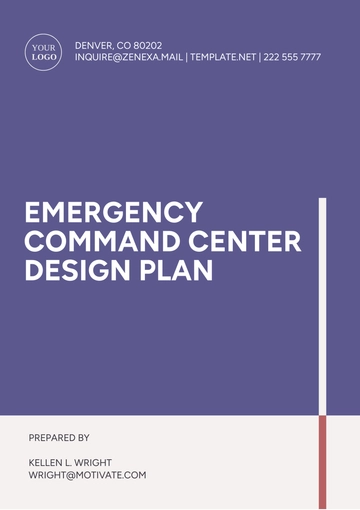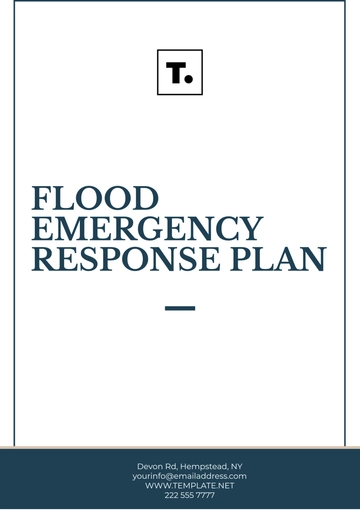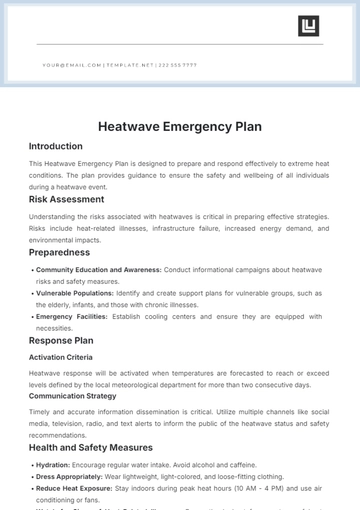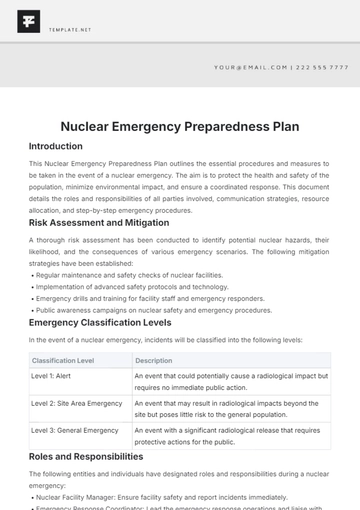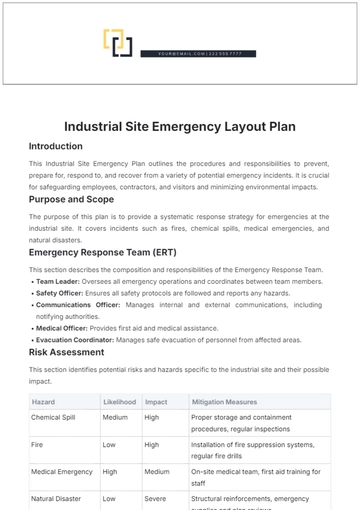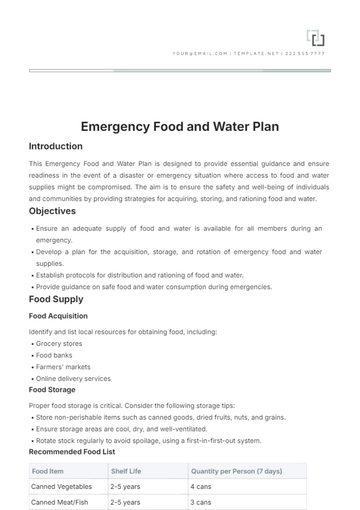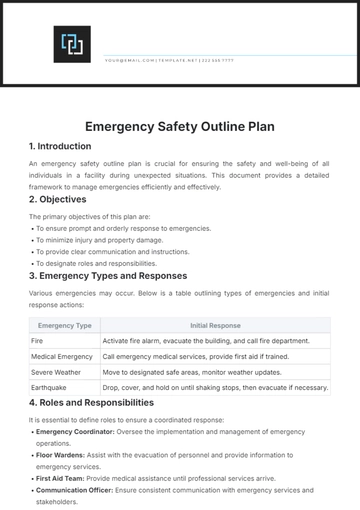Free Earthquake Emergency Response Plan
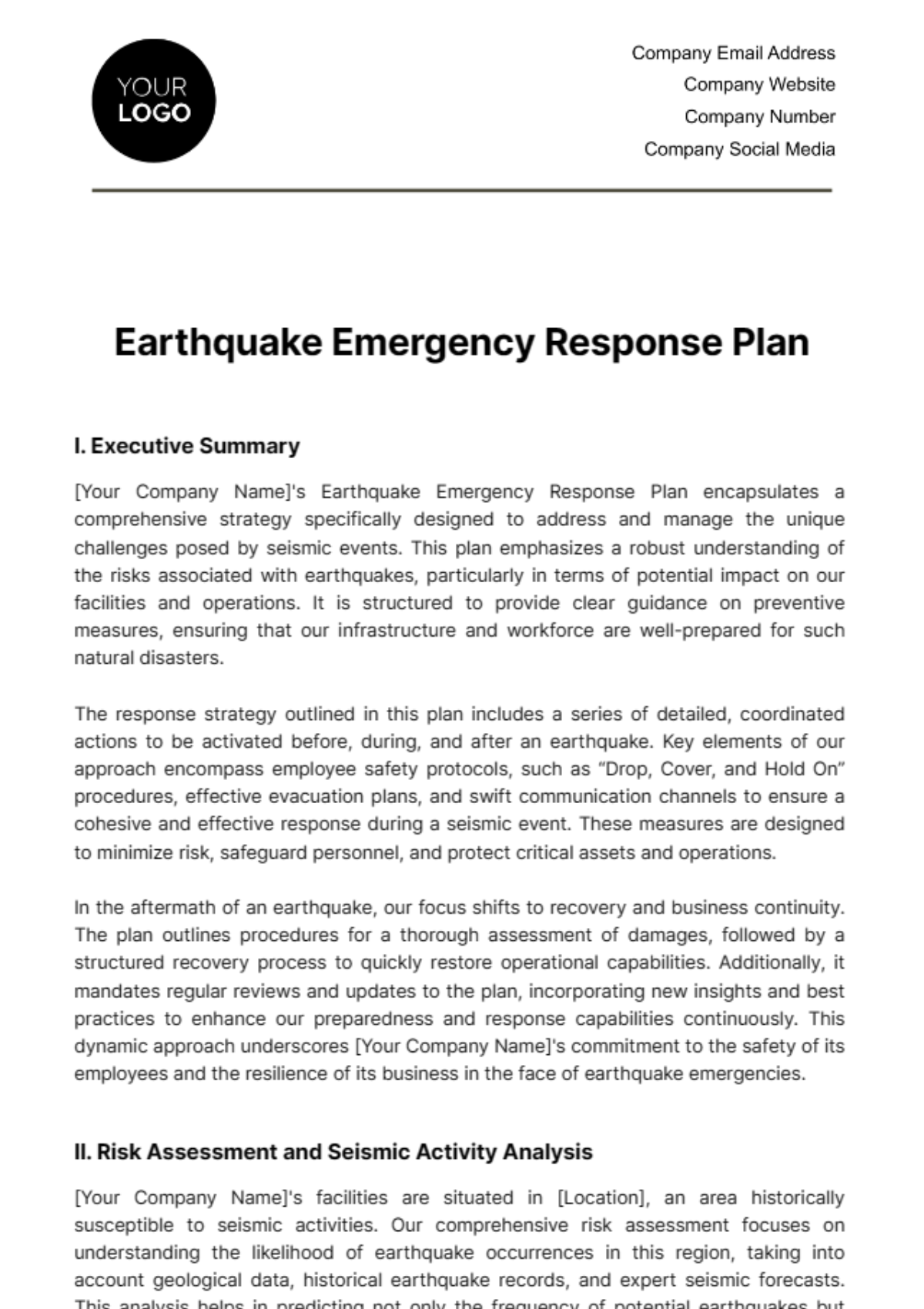
I. Executive Summary
[Your Company Name]'s Earthquake Emergency Response Plan encapsulates a comprehensive strategy specifically designed to address and manage the unique challenges posed by seismic events. This plan emphasizes a robust understanding of the risks associated with earthquakes, particularly in terms of potential impact on our facilities and operations. It is structured to provide clear guidance on preventive measures, ensuring that our infrastructure and workforce are well-prepared for such natural disasters.
The response strategy outlined in this plan includes a series of detailed, coordinated actions to be activated before, during, and after an earthquake. Key elements of our approach encompass employee safety protocols, such as “Drop, Cover, and Hold On” procedures, effective evacuation plans, and swift communication channels to ensure a cohesive and effective response during a seismic event. These measures are designed to minimize risk, safeguard personnel, and protect critical assets and operations.
In the aftermath of an earthquake, our focus shifts to recovery and business continuity. The plan outlines procedures for a thorough assessment of damages, followed by a structured recovery process to quickly restore operational capabilities. Additionally, it mandates regular reviews and updates to the plan, incorporating new insights and best practices to enhance our preparedness and response capabilities continuously. This dynamic approach underscores [Your Company Name]'s commitment to the safety of its employees and the resilience of its business in the face of earthquake emergencies.
II. Risk Assessment and Seismic Activity Analysis
[Your Company Name]'s facilities are situated in [Location], an area historically susceptible to seismic activities. Our comprehensive risk assessment focuses on understanding the likelihood of earthquake occurrences in this region, taking into account geological data, historical earthquake records, and expert seismic forecasts. This analysis helps in predicting not only the frequency of potential earthquakes but also their possible magnitudes and durations, which are crucial for planning our response strategies.
The impact analysis component of this assessment evaluates how different magnitudes of earthquakes could affect our operations and infrastructure. It examines the structural integrity of our facilities, the vulnerability of critical equipment and systems, and the potential operational disruptions that could arise from various seismic events. This part of the assessment is instrumental in identifying the key areas where strengthening and mitigation strategies are most needed to protect our assets and personnel.
Guided by this risk and impact analysis, our earthquake preparedness and response strategies are tailored to address the specific challenges posed by the seismic profile of [Location]. This includes reinforcing facilities to withstand earthquakes, securing essential machinery and technology, and developing evacuation and emergency response plans that consider the unique nature of seismic risks. By aligning our emergency preparedness efforts with the detailed insights gained from this analysis, [Your Company Name] ensures a robust and informed approach to managing earthquake risks.
Emergency Response Team and Contact Information | |||
Incident Commander | [Name] | Responsible for leading the overall earthquake response | [Office number, mobile number, email address] |
Safety Officer | [Name] | Ensure all safety protocols are adhered to during an earthquake | [Office number, mobile number, email address] |
External Contacts | Local emergency services seismic experts, and structural engineers | [Local emergency service number] [Seismic expert number] [Structural engineer number] | |
III. Earthquake Preparedness Measures
To enhance resilience against seismic events, [Your Company Name] has undertaken significant structural reinforcement of our facilities. This includes upgrading building foundations and frameworks with earthquake-resistant materials and technologies, ensuring they adhere to the latest seismic safety standards. Additionally, we have implemented rigorous inspections and maintenance routines to ensure ongoing structural integrity, particularly focusing on areas most susceptible to earthquake damage.
In terms of equipment and operational preparedness, we have systematically secured all critical machinery and technology to prevent tipping or movement during an earthquake. This involves anchoring heavy equipment to the ground and using flexible, shock-absorbent materials to safeguard sensitive devices. We have also strategically placed emergency shut-off valves and breakaway connectors to minimize the risk of fires or leaks from utility lines during a seismic event.
To ensure the well-being of our employees during an earthquake, we maintain a robust stock of emergency supplies at accessible locations throughout the facility. These supplies include comprehensive first aid kits, adequate water and food provisions for all staff, and emergency lighting systems. We regularly review and replenish these supplies to maintain their readiness. Additionally, clear signage is placed throughout the facility, indicating the location of these supplies as well as evacuation routes and safe zones, enhancing our overall preparedness for potential seismic emergencies.
IV. Earthquake Response Procedures
These procedures outline a comprehensive approach to managing earthquake emergencies, ensuring that [Your Company Name] can respond effectively at each stage of an event, from preparation to recovery.
A. Before an Earthquake
[Your Company Name] prioritizes regular training and drills to ensure that all staff are well-prepared for an earthquake. These drills emphasize the “Drop, Cover, and Hold On” technique, a proven method for protecting oneself during the shaking.
Additionally, employees are educated on how to safely evacuate the building, recognizing safe zones, and identifying potential hazards within the workplace that could pose risks during an earthquake. These preparatory activities are essential in fostering a culture of safety and readiness among our workforce.
B. During an Earthquake
In the event of an earthquake, our emergency alert system is immediately activated to provide real-time instructions and information to all employees. If the situation necessitates evacuation, pre-established routes are followed to ensure orderly and safe exit from the building to designated assembly points.
Throughout this process, team leaders are responsible for accounting for the safety of all employees, conducting headcounts at assembly areas, and assisting anyone in need of help. The primary objective during this phase is to ensure the safety and well-being of every individual on the premises.
C. After an Earthquake
Once the shaking has stopped and it's safe to do so, a thorough assessment of the facility is conducted to identify any structural damages or potential hazards that could pose risks in the aftermath. This assessment is crucial in determining the feasibility of re-entering the building and resuming operations.
We coordinate closely with emergency services for professional evaluation and assistance. Concurrently, our business continuity plan is activated to ensure that critical business functions can continue, either at the affected site, if deemed safe, or at an alternate location. This plan is integral to minimizing operational disruptions and maintaining essential services post-earthquake.
V. Communication Plan
An established communication protocol for notifying employees of an earthquake threat and providing updates during and after the event. This includes a system for maintaining contact with external emergency services and stakeholders.
VI. Recovery and Post-Earthquake Restoration
Following an earthquake, a specialized team will assess damages and initiate recovery operations. Prioritization will be given to restoring critical business functions, with a focus on employee safety during cleanup and structural repairs.
VII. Training and Drills
Comprehensive training programs are in place, including annual earthquake response drills. These exercises are designed to familiarize staff with evacuation routes and safety procedures, ensuring preparedness for an actual event.
VIII. Plan Review and Maintenance
The Earthquake Emergency Response Plan is reviewed annually or following significant seismic events. This includes updating procedures based on new insights, changes in infrastructure, or advancements in earthquake preparedness and response methodologies.
Prepared by:
[Your Name],
[Your Job Title]
[Your Company Name]
- 100% Customizable, free editor
- Access 1 Million+ Templates, photo’s & graphics
- Download or share as a template
- Click and replace photos, graphics, text, backgrounds
- Resize, crop, AI write & more
- Access advanced editor
Introducing Template.net's Earthquake Emergency Response Plan Template - your essential companion in crisis management. This fully editable and customizable template, powered by our Ai Editor Tool, equips you with a comprehensive plan to mitigate risks and ensure swift action during earthquakes. Safeguard your organization effectively with Template.net's innovative solutions.
You may also like
- Finance Plan
- Construction Plan
- Sales Plan
- Development Plan
- Career Plan
- Budget Plan
- HR Plan
- Education Plan
- Transition Plan
- Work Plan
- Training Plan
- Communication Plan
- Operation Plan
- Health And Safety Plan
- Strategy Plan
- Professional Development Plan
- Advertising Plan
- Risk Management Plan
- Restaurant Plan
- School Plan
- Nursing Home Patient Care Plan
- Nursing Care Plan
- Plan Event
- Startup Plan
- Social Media Plan
- Staffing Plan
- Annual Plan
- Content Plan
- Payment Plan
- Implementation Plan
- Hotel Plan
- Workout Plan
- Accounting Plan
- Campaign Plan
- Essay Plan
- 30 60 90 Day Plan
- Research Plan
- Recruitment Plan
- 90 Day Plan
- Quarterly Plan
- Emergency Plan
- 5 Year Plan
- Gym Plan
- Personal Plan
- IT and Software Plan
- Treatment Plan
- Real Estate Plan
- Law Firm Plan
- Healthcare Plan
- Improvement Plan
- Media Plan
- 5 Year Business Plan
- Learning Plan
- Marketing Campaign Plan
- Travel Agency Plan
- Cleaning Services Plan
- Interior Design Plan
- Performance Plan
- PR Plan
- Birth Plan
- Life Plan
- SEO Plan
- Disaster Recovery Plan
- Continuity Plan
- Launch Plan
- Legal Plan
- Behavior Plan
- Performance Improvement Plan
- Salon Plan
- Security Plan
- Security Management Plan
- Employee Development Plan
- Quality Plan
- Service Improvement Plan
- Growth Plan
- Incident Response Plan
- Basketball Plan
- Emergency Action Plan
- Product Launch Plan
- Spa Plan
- Employee Training Plan
- Data Analysis Plan
- Employee Action Plan
- Territory Plan
- Audit Plan
- Classroom Plan
- Activity Plan
- Parenting Plan
- Care Plan
- Project Execution Plan
- Exercise Plan
- Internship Plan
- Software Development Plan
- Continuous Improvement Plan
- Leave Plan
- 90 Day Sales Plan
- Advertising Agency Plan
- Employee Transition Plan
- Smart Action Plan
- Workplace Safety Plan
- Behavior Change Plan
- Contingency Plan
- Continuity of Operations Plan
- Health Plan
- Quality Control Plan
- Self Plan
- Sports Development Plan
- Change Management Plan
- Ecommerce Plan
- Personal Financial Plan
- Process Improvement Plan
- 30-60-90 Day Sales Plan
- Crisis Management Plan
- Engagement Plan
- Execution Plan
- Pandemic Plan
- Quality Assurance Plan
- Service Continuity Plan
- Agile Project Plan
- Fundraising Plan
- Job Transition Plan
- Asset Maintenance Plan
- Maintenance Plan
- Software Test Plan
- Staff Training and Development Plan
- 3 Year Plan
- Brand Activation Plan
- Release Plan
- Resource Plan
- Risk Mitigation Plan
- Teacher Plan
- 30 60 90 Day Plan for New Manager
- Food Safety Plan
- Food Truck Plan
- Hiring Plan
- Quality Management Plan
- Wellness Plan
- Behavior Intervention Plan
- Bonus Plan
- Investment Plan
- Maternity Leave Plan
- Pandemic Response Plan
- Succession Planning
- Coaching Plan
- Configuration Management Plan
- Remote Work Plan
- Self Care Plan
- Teaching Plan
- 100-Day Plan
- HACCP Plan
- Student Plan
- Sustainability Plan
- 30 60 90 Day Plan for Interview
- Access Plan
- Site Specific Safety Plan

